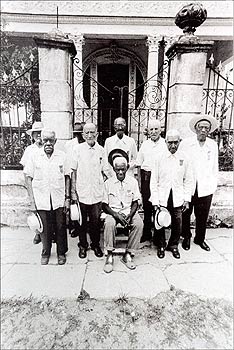Los Angeles County Museum of Art ,
Apr 15, 2001 - Jul 01, 2001
Los Angeles, CA, USA
Exhibition Review
by LatinArt.com
The Prologue
The Prologue to this exhibition will comprise an overview of Cuban political, social, and cultural history. Using timelines, explanatory text, and ephemera, the prologue gallery provides a context within which to understand the images produced after the Revolution. Included in the prologue will be a few examples of the iconic photographs made by important photographers of the Revolution's military struggles, including Alberto Korda, and Osvaldo Salas. These images reflect the heroic personalities of the revolution and establish a baseline from which three generational shifts in the conception and uses of photography can be traced.
The First Generation
The photographers of the First Generation extended the heroic representations of earlier photographers. Instead of fostering the cult of great personalities such as Fidel and Che, this new generation concentrated its efforts on the new hero of the revolution, the common man. Photographers such as Enrique de la Uz, Iván Cañas, Rigoberto Romero, María Eugenia Haya (Marucha), and José Alberto Figueroa will be featured in this section. In both personal work and in photo-essay formats for picture magazines such as Cuba and Cuba International, these photographers of the First Generation celebrated workers (in industry as well as in the cane fields), life in the streets, and the changing face of the island. Alternately exploring the joyous as well as the backbreaking nature of life on the island, their powerfully rendered black-and-white images remained visually consistent with their predecessor's. Yet, the overriding conceptual concerns while reflecting the new social order become increasingly more personalized.
The Second Generation
The concerns of the Second Generation photographers, such as José Manuel Fors,are reflected in images that are intensely introspective and insular. Their primary sphere of investigation is that of the domestic realities of the aftermath of the revolution-the cycles and obstacles of everyday life. In a departure form the previous generation however, this new way of relating to the consequences of revolution features the rise of manipulated imagery and tableaux. These visual strategies allow for the incorporation of both universal understanding and meaning.
|









